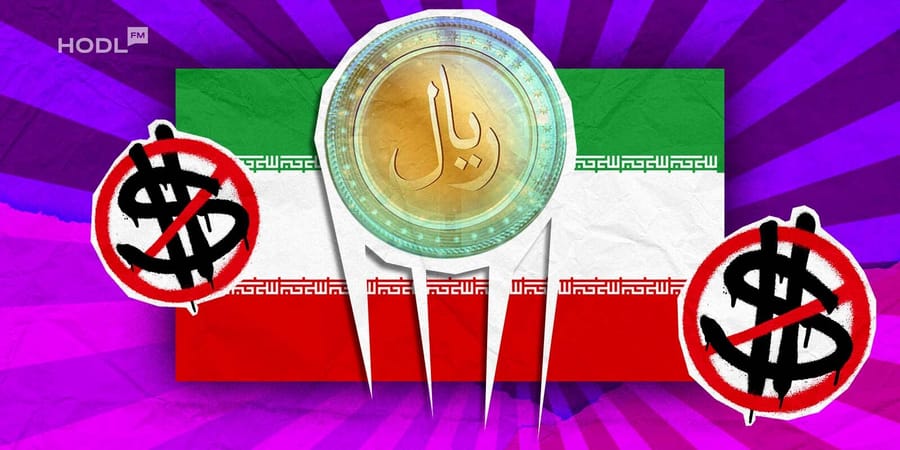Iran's vision of launching its Central Bank Digital Currency (CBDC), the Digital Rial, might not be far-fetched anymore.
The Central Bank of Iran’s Governor, Mohammad Reza Farzin, hinted towards its possible deployment by 2025. This announcement was the major highlight of Farzin's speech on November 26 during the Modern Banking and Payment System Conference in Tehran.
The Central Bank of Iran (CBI) plans to introduce its digital currency, the Digital Rial, as part of a broader initiative to modernize the country’s banking infrastructure and enhance international financial collaboration.
— Iran Daily (@IranDailyWeb) November 26, 2024
Mohammadreza Farzin, the governor of the CBI, broke in… https://t.co/B2Fr3Q2Ft1 pic.twitter.com/KJCKSAPX84
In a post on their X platform, PandoraTech reported Farzin describing the introduction of the Digital Rial as a “significant milestone in modernizing Iran’s financial system” and confirmed its imminent launch.
He also reiterated Iran's commitment towards the Digital Rial project stating that, “Developing innovative banking systems is a central bank’s responsibility worldwide, and we are determined to fulfill this duty in Iran.”
Governor of the Central Bank of #Iran has announced that the digital Rial will begin operations soon, stressing that the development of modern banking is one of the central bank’s key ongoing goals. pic.twitter.com/tbVPSCyL6h
— Iran's Today (@Iran) November 25, 2024
The Digital Rial has been under active development by the Iranian government since 2018. And from what we know about the CBDC, it's said to utilize open-source Hyperledger Fabric technology, a well-regarded blockchain framework with enterprise applications.
Additionally, the Digital Rial is designed to operate independently of traditional bank accounts, facilitating direct transfers between users without interbank settlement processes. This approach aims to streamline payments, bolster security, and support the growth of Iran’s digital economy.
Since 2018, the CBI only made a major progress on the CBDC’s development when it announced the completion of its “pre-pilot” phase in mid-2023. The pilot program for the CBDC was launched in June this year on Kish Island, marking the turning point of this initiative.
During this pilot phase, banking customers and tourists utilized the Digital Rial for transactions via digital wallets, eliminating the need for physical cash or bank cards.
Why is that?
Iran is using it to modernize its financial system with the development of CBDC is to combat heightened western sanctions. These sanctions, which have been threatening to cripple the country's economy, forced them to seek an alliance with Russia.
One of the major breakthroughs of this alliance is that both countries are working towards integrating their national payment systems, its Shetab network, with Russia’s MIR payment system. This collaboration allows cross-border transactions and supports tourism, with Russian tourists expected to use Iran’s point-of-sale systems this winter.
Russian news sources also predict that Iranian travelers will gain similar access in Russia by early 2025, showcasing the practical benefits of these integrations. According to the Iranian Ambassador to Russia, Kazem Jalali, “The Russian payment system Mir is being integrated with the Iranian Shetab and will start working in Iran in about six months.”
🇷🇺🇮🇷 “The Russian payment system Mir is being integrated with the Iranian Shetab and will start working in Iran in about six months”
— Lord Bebo (@MyLordBebo) September 15, 2024
— Iranian Ambassador to Russia Kazem Jalali
Eastern credit cards … pic.twitter.com/o8zXHDEa6h
Another proactive measure the CBI has taken to mitigate the effects of international sanctions is the implementation of the ACU-MIR platform. The platform, which was launched in October, serves as an alternative to SWIFT, facilitating regional trade and enabling smoother transactions with key partners like India and Pakistan.
These initiatives are part of a larger strategy aimed at strengthening financial relationships with BRICS nations, which are increasingly adopting local currencies to lessen reliance on traditional global financial systems.

Disclaimer: All materials on this site are for informational purposes only. None of the material should be interpreted as investment advice. Please note that despite the nature of much of the material created and hosted on this website, HODL FM is not a financial reference resource and the opinions of authors and other contributors are their own and should not be taken as financial advice. If you require advice of this sort, HODL FM strongly recommends contacting a qualified industry professional.





